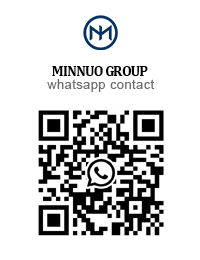Against the backdrop of continued turmoil in the global supply chain, from the pending war in Ukraine, the escalating Middle East situation and the spreading Red Sea crisis, to delays in ship scheduling at European and American ports and volatility in the prices of key raw materials, the entire international equipment procurement system is facing unprecedented delivery pressures. For purchasers of medical oxygen equipment and industrial gas equipment, delivery delays are no longer just an increase in financial costs, but a systemic risk directly linked to project downtime, delays in patient care or production line downtime. As a result, we have entered an era of “high risk delivery” where mere competition on price and parameters no longer guarantees project success or failure.
This report focuses on “How to Avoid Supply Chain Bottleneck in 2025”, and through three case studies, namely the unexpected substitution of a German hospital group, the emergency handling of an engineering window in a French government hospital, and the mediation of a technical dispute in a U.S. Plateau Pharmaceuticals client, the key links that are most likely to be out of control in the process of system operation, and the systematic analysis of how MINNUO has accomplished high-quality delivery under extreme circumstances with its engineering coordination mechanism, remote commissioning capability and fast customs clearance path. This is not only a win for equipment performance, but also a deep verification of the system’s ability to withstand pressure.
If you are in charge of the procurement of oxygen or nitrogen systems, or facing the uncertainty of project implementation, the next content will bring you to see: behind the successful delivery of equipment, the real key is not the equipment itself, but what kind of system partner you have chosen. Read on to see how the ability to deliver without fail is constructed, and to rethink the place of “price” in purchasing decisions.
一、Case 1: Germany – Hospital Group Procurement Collapses, Backup Vendor Saves ICU Oxygen Timeline
Context:
Client:
A group of state hospitals in Bavaria, Germany, issued a unified tender for the procurement of 4 sets of ICU medical molecular sieve oxygen generating systems at the beginning of 2025, to serve the upgrading and renovation program of ICU wards.
Original Successful Vendor Issue:
The original vendor was an Italian brand, and the project was stalled for more than 3 weeks due to a shortage crisis of piping components in Europe at the end of 2024, a delay in the arrival of key piping fittings for the equipment, and restrictions on the entry of technical engineers into Germany for their visas. The hospital group had originally relied on a single vendor to complete the overall delivery, with no alternative response mechanism in place.
MINNUO intervened:
After receiving the customer’s urgent contact, we activated the “Delivery Guarantee Mechanism” and launched a rapid and systematic response:
Three core actions were completed within 3 days:
Docking with the customer’s technical team on the project requirements, and re-adaptation of the gas flow rate and the system interface specifications;
Rapid switchover of the factory to a customized version of the ICU Oxygen under the German standard conditions; Sample machine with customized versions of the requirements; and Customized version for German standard working conditions;
Sample machine with out-of-the-box operation capability after commissioning is completed.
Optimization of logistics route:
choose “Ningbo → Antwerp, Belgium → Germany by land” double-clearance air transport channel, avoiding the Red Sea congestion, to ensure stable and controllable logistics;
full tracking of the logistics status and coordination with the local customs clearance authorities in Germany, to prevent delays in customs clearance.
Remote support system is enabled:
ICU system preset operation logic and alarm linkage mechanism, remote engineers gradually guide customers to complete the landing;
Provide Chinese and German bilingual remote debugging video, with VPN remote online detection of PLC signals and flow feedback response;
The operation log system synchronizes the recording of each start/stop/commissioning time, helping the customer to keep the compliant usage materials, so as to facilitate the subsequent declaration of project acceptance documents to the German Federal Medical Devices Regulatory Authority.
Outcome:
Project delivery is prioritized
The original winning equipment has not yet arrived at the port, but the MINNUO system has already finished running, and the customer has officially switched to us as the main system, while keeping the original brand as the backup solution.
Establishment of trust in the system
After the project went online as scheduled, the customer gave feedback that MINNUO provided not only equipment, but also a whole set of engineering response and delivery solutions, and that its “technical configuration capability, rapid production capacity, and cross-border support capability” could not be replaced by the original brand in a short period of time.
Long-term cooperation framework established
The Bavarian State Medical Equipment Procurement Department included MINNUO in the state’s list of alternative suppliers for all future medical oxygen projects, stating publicly: “This is one of the few oxygen system projects that have successfully come online on schedule despite fluctuations in the global manufacturing chain.”
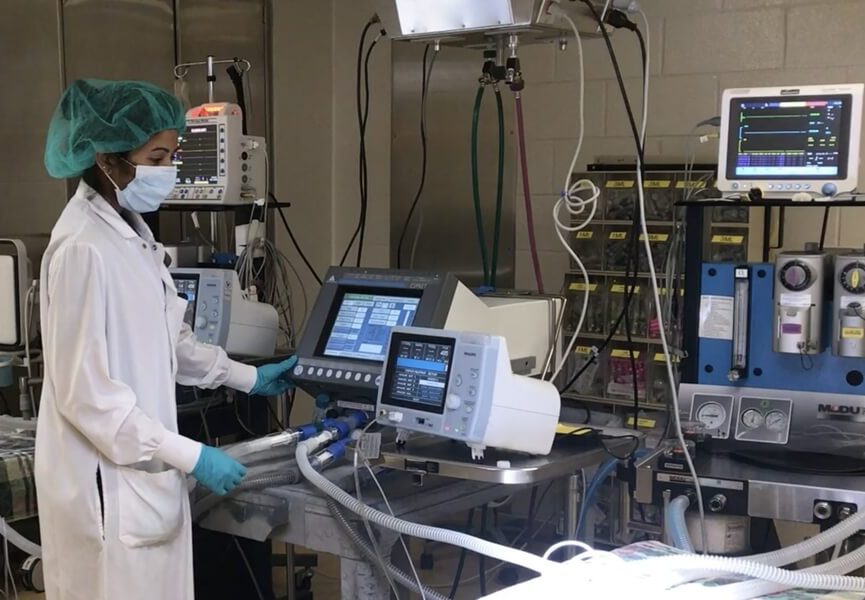
二、Case 2: France – Emergency Repair in Government Hospital: No Local Engineers, No Time
Context:
Hospital Background:
A municipal general hospital in a coastal city in western France, the oxygen system used by the hospital is an obsolete model from a 20-year old equipment upgrade. In January 2025, a rare and heavy snowfall led to an interruption in the power supply and a short-circuit in the main control cabinet, which resulted in damage to the mainframe of the system and an interruption of the oxygen supply to the ICU.
Supply dilemma:
The hospital tried to contact the original equipment manufacturer for repair, but due to tight work order scheduling and lack of spare modules from the local authorized contractor, the repair cycle was expected to take more than 7 days, far exceeding the time limit for medical safety.
Faced with the risk of not being able to recover within 48 hours, the French Ministry of Health exempted the hospital from cross-border emergency procurement approval and authorized the hospital to contact overseas suppliers directly.
MINNUO Response Mechanism:
Rapid Response Channel Activation (T+0~T+6 hours):
Activate the “Green Mechanism for Overseas Emergency Orders”, and complete the internal evaluation, French program confirmation and production scheduling within 6 hours;
Project Specialist communicates with the engineering person in charge of the French hospital in real time by phone about the system interface, power connection and installation environment;
Provide product manuals and installation instructions in French to facilitate on-site operation by the French maintenance team.
Equipment customization and pre-configuration of the factory (T+6~T+24 hours):
Based on the local climate characteristics and hospital power grid conditions, modify the temperature control logic and pressure feedback parameters;
Enable PLC remote monitoring template and built-in support for the Modbus communication interface to meet the French hospital’s existing centralized monitoring platform docking;
All the parameters and debugging steps are preset into the system, without relying on the local installation engineers to achieve remote activation and operation. All parameters and debugging steps are preset in the system and can be activated remotely without relying on local installation engineers.
Logistics and Customs Clearance (T+24~T+43 hours):
Directly sent to Paris by air, and then escorted to the hospital by local government vehicles;
Simultaneous remote engineers through VPN access to assist in the final wiring and on-site testing.
Outcome:
✅ 43 hours for the system to fully restore oxygen supply
The equipment was put into use in only 43 hours from China to western France, which set a new record for transnational transportation response of local medical equipment, and became the “Internal Rapid Response Demonstration Project” for France’s health emergency in 2025.
✅ Optimization of feedback mechanism for on-site operation and maintenance personnel
The French hospital’s follow-up feedback: “We were most worried about the language and technical docking problems at the initial stage, but the graphic guidelines, preset configurations and remote intervention mechanism provided by MINNUO made the whole delivery process almost independent of the local engineering team, and for the first time, we felt the ‘systematic professionalism of Made-in-China’.
✅ Institutional Recognition
For the first time, the hospital included “non-EU alternative technical resources” in its internal review meeting for future contingencies, and MINNUO became the preferred contact person for the hospital’s future oxygen equipment.
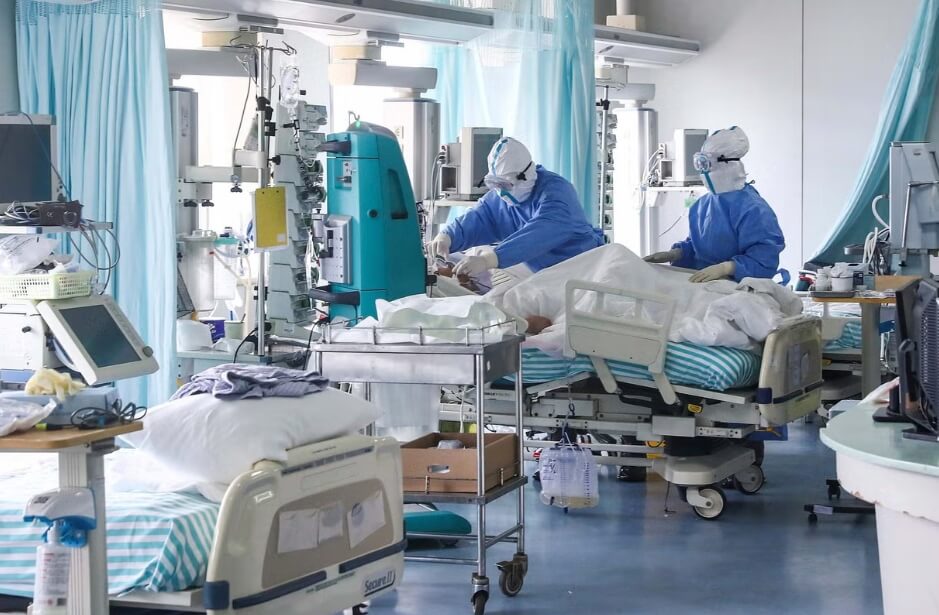
三、Case 3: USA – Altitude Interference, Remote Debugging and Technical Dispute Resolution
Context:
Project Background:
A pharmaceutical plant in the Sierra Nevada mountain range region of California, USA, installed a plateau-type medium-sized oxygen system for the stable supply of oxygen in the filling area of the clean room. The region is always at an altitude of 1800~2200 meters, which is a highland low-pressure environment.
Site Problem:
Two days after the system was delivered, there was an oxygen concentration fluctuation alarm and delayed flow feedback, which prevented the customer’s cleanroom project from passing the first round of pre-acceptance for GMP certification. The local regional integrator believed that there was a problem with the stability of the equipment and sent an official email to return the system according to the terms of the contract.
MINNUO technical intervention:
Remote fast forensics + qualitative diagnosis (T+0 ~ T+12 hours)
Started the “engineering log pulling mechanism”, extracted the control system’s operating records for the past 72 hours through the remote interface;
Based on the data, the PID logic failed to adapt to the local low air pressure environment, and the weak feedback signal led to the regulation lag;
Clearly define the boundary of responsibility: non-hardware failure, belongs to the parameter adaptation problem caused by the change of working conditions.
Parameter Correction + Online Tuning (T+12 ~ T+24 hours)
Engineers access the customer’s on-site control cabinet through remote tools to reset the sampling frequency and error threshold of the O₂ ratio controller;
Manually simulate the different loading environments of the three wheels, observe the pressure fluctuations and the response of the oxygen concentration, and gradually fine-tune the PID ratio and integral parameters.
Compliance material support (T+24 ~ T+48 hours)
Provide pre- and post-comparison test data analysis reports with calibration process documentation;
Help customers submit GMP audit supplemental materials to meet FDA requirements for traceability and verifiability of the oxygen system;
Provide project-specific “Closed Loop Record of Technical Disputes” reports to meet North American contractual compliance standards.
Outcome:
✅ Technical issues were resolved within 48 hours, and the escalation of the dispute was successfully blocked.
The customer finally canceled the return operation, signed the “Confirmation of Continued Use”, and took the initiative to send an email to the headquarter recommending MINNUO to join the list of long-term cooperative suppliers.
✅ Establishing the “High Plateau Working Condition Adaptation Parameter Library” for the first time in North America
Based on the experience of this adjustment, the engineering department has formed a template for optimizing the operation logic in high plateau working condition (above 1500m), which will be integrated as a standard module in all the exported high plateau projects in North America/South America to further enhance the robustness of the deliveries.
✅ Summary of customer feedback:
“We thought this was just a routine equipment installation, we didn’t expect such a fast technical response and parameter-level intervention after the problem arose.MINNUO’s remote engineering support understands our project needs better than our local service provider.”
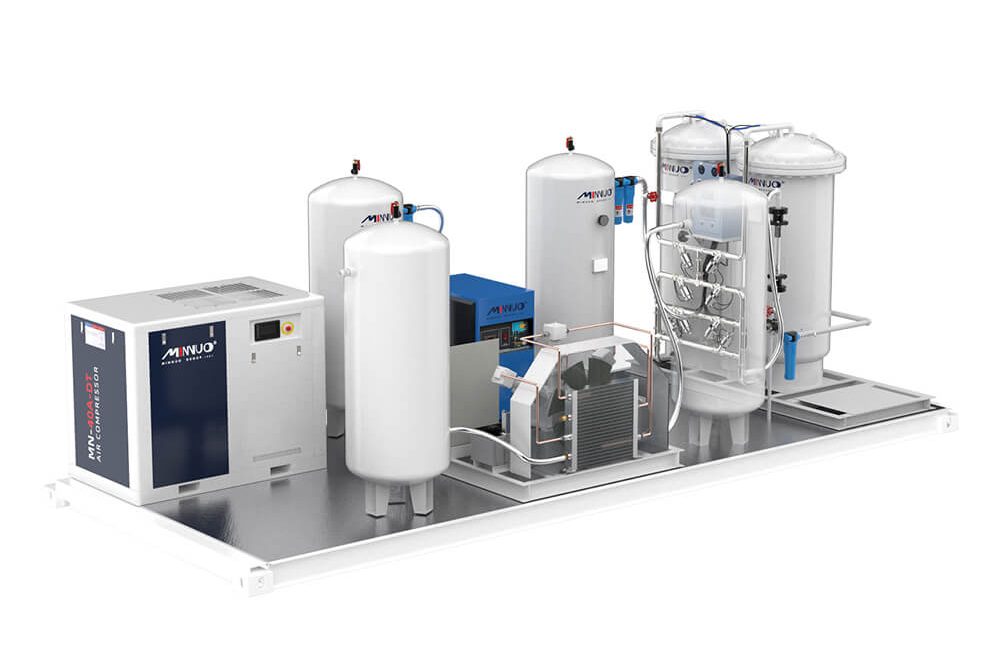
四、MINNUO’s Edge Under Pressure
Core Competency Analysis: Why do projects run on schedule amidst high uncertainty?
✅ 1. Engineering support system: solving the world-class problem of “time difference + language + technology relocation”
Equipped with a 24-hour online multilingual engineer team, supporting English, German, French and Spanish
Each engineer receives special training on GMP, compliance operation of hospital gas supply system, and differences in interface specifications.
Can set up a remote conference room within 30 minutes of a customer’s question. We can set up a remote conference room within 30 minutes after the customer’s problem, and the fastest support for “collaborative remote troubleshooting across 3 countries and 3 time zones”.
Example: German ICU project, i.e., through the linkage between China and Germany + VPN debugging, it took only 1 hour to complete the correction of O₂ concentration control parameters.
✅ 2. Pre-configured factory mechanism: let the equipment “work as soon as it arrives” is not a slogan. “
All the export equipment before leaving the factory for the project environment adaptation simulation exercise, according to the customer’s voltage frequency, climate conditions, data interface requirements for multiple rounds of verification
control program written in advance into the local language menu, communication protocols (eg, Modbus, BACnet, PROFIBUS)
to achieve the ”Plug and Play “Reduce the dependence of on-site commissioning on the local engineering team
Example: In the French project, the hospital completed the commissioning of the whole machine on line with only video guidance, without the need for engineers to be present
✅ 3. Adaptability of cross-border logistics: from ”fast delivery“ to ”strong risk avoidance capability ”
has strategic cooperation with a number of international logistics providers, such as UPS medical parts, DHL emergency parts, SF cross-border medical clearance green channel
can quickly switch routes according to the regional situation (such as avoiding the Red Sea Route, transit Belgium or the United Arab Emirates third-country customs clearance)
supports DDP / DDU trade terms of the whole chain of delivery, to help customers avoid the delivery of the risk of interruption due to the failure of the tax system / customs clearance. Interruption risk
Example: Germany project adopts “Belgium transit + road entry” program, avoiding port congestion and delivering in advance
✅ 4. System-level product capabilities: not selling equipment, but selling “operational capabilities”
All deliverables cover:
Host equipment body
Interface protocol configuration file
Commissioning test report
Remote diagnostic module and VPN access authorization
Installation + training process record documentation package (can be used for certification audits)
Integrated delivery closed-loop capabilities, especially for hospitals, pharmaceutical factories, food factories, and other GMP customers
Example: In the U.S. plateau project, the customer used the complete operating records provided by us to directly pass the FDA compliance remediation audit.
五、What Procurement Teams Must Learn from These Cases
✅ In an era of uncertainty, price is not the primary risk, but delivery and go-live capabilities are the anchor points for decision-making
With risk factors such as geopolitics, shipping disruptions, and supply chain disruptions stacked on top of each other, the traditional strategy of “winning the bid at the lowest price” is failing. Procurement staff must look at suppliers’ full-cycle delivery, technical support and cross-border coordination capabilities to ensure that projects go live on schedule.
Recommendations for purchasers of medical and industrial gas systems:
1. Prioritize suppliers with “complete lifecycle closed-loop services”
including equipment manufacturing, remote commissioning, compliance documentation, training on system operation, and spare parts supply and response mechanisms
Especially for medical/pharmaceutical industries that need to be audited by GMP, FDA, CE, and so on.
MINNUO has closed the loop from delivery to compliance documentation in the case of German ICUs and U.S. Pharmaceuticals
2. Avoiding the “hardware wins, project delays” paradigm
Many vendors win the bidding on price, only to experience:
Delayed spare parts
No remote assistance capability
Lack of local language support for services
Lack of local service language support. On-site commissioning relies heavily on the presence of engineers.
The result is that the project is delayed, the audit is not passed, and the supplier even faces liability.
✅ We recommend that a test be added to the bidding stage:
“Whether it is possible to provide remote on-line solutions and a mechanism for dealing with unforeseen circumstances in the project”, and this kind of capability can be included in the technical score sheet as a non-price item.
3. Review the supplier’s response mechanism and cross-team collaboration capability in unexpected situations
The key issue is not whether the supplier can deliver, but whether it can quickly restore the oxygen supply capability in the event of unexpected events such as logistics disruption, power anomaly, interface incompatibility, and so on.
You can prejudge the situation in the following ways:
Ask for historical emergency response cases
Query whether there is a multi-language debugging log document
Evaluate whether there are standardized parameter adaption templates and remote support Process
MINNUO’s successful response to complex challenges such as lack of local engineers and incompatible interfaces in the French project, and restoration of the system within 43 hours, is an example to follow
Conclusion
The supply chain of 2025 is no longer a price competition, but a severe test of “system resilience”. It is not the inventory quantity but the response speed, cross-country debugging ability and project synergy control that can really overcome the turbulence.
From the unexpected replacement of a hospital in Germany, to the emergency on-line of a French government project with zero engineers, to the remote resolution of a technical dispute in a U.S. highland pharmaceutical company, what MINNUO has demonstrated is not a single point of product delivery, but a whole set of oxygen/nitrogen system delivery solutions for global medical and industrial customers.
Wait-and-see has proven to be the biggest procurement risk in 2025. In the face of unpredictable logistical delays, geopolitical policies, and technological disruptions, contracts that seem secure are often lost in the “last mile”.
For hospitals, pharmaceutical companies and industrial manufacturers planning new, replacement or expansion projects for oxygen or nitrogen systems, MINNUO provides not only the equipment, but also the ability to ensure that the system is brought online on time.
It’s never the price of the winning bid that determines the success of a delivery, it’s who you choose to work alongside.

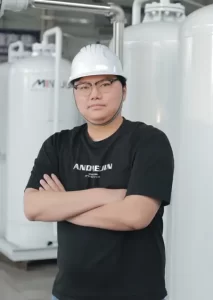
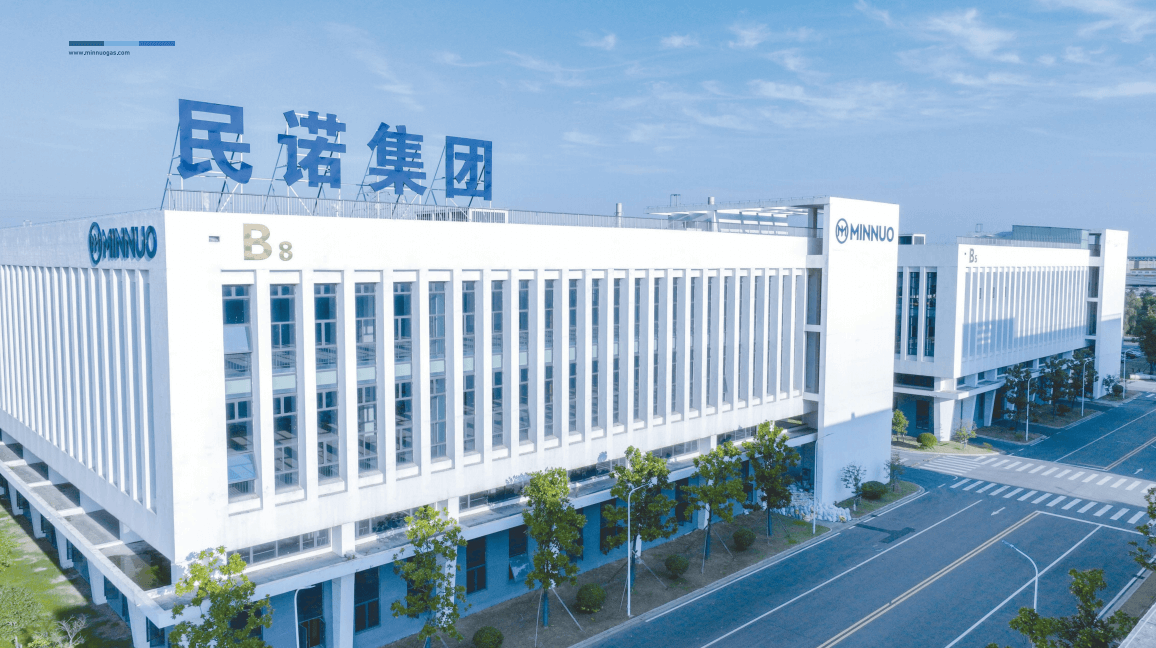

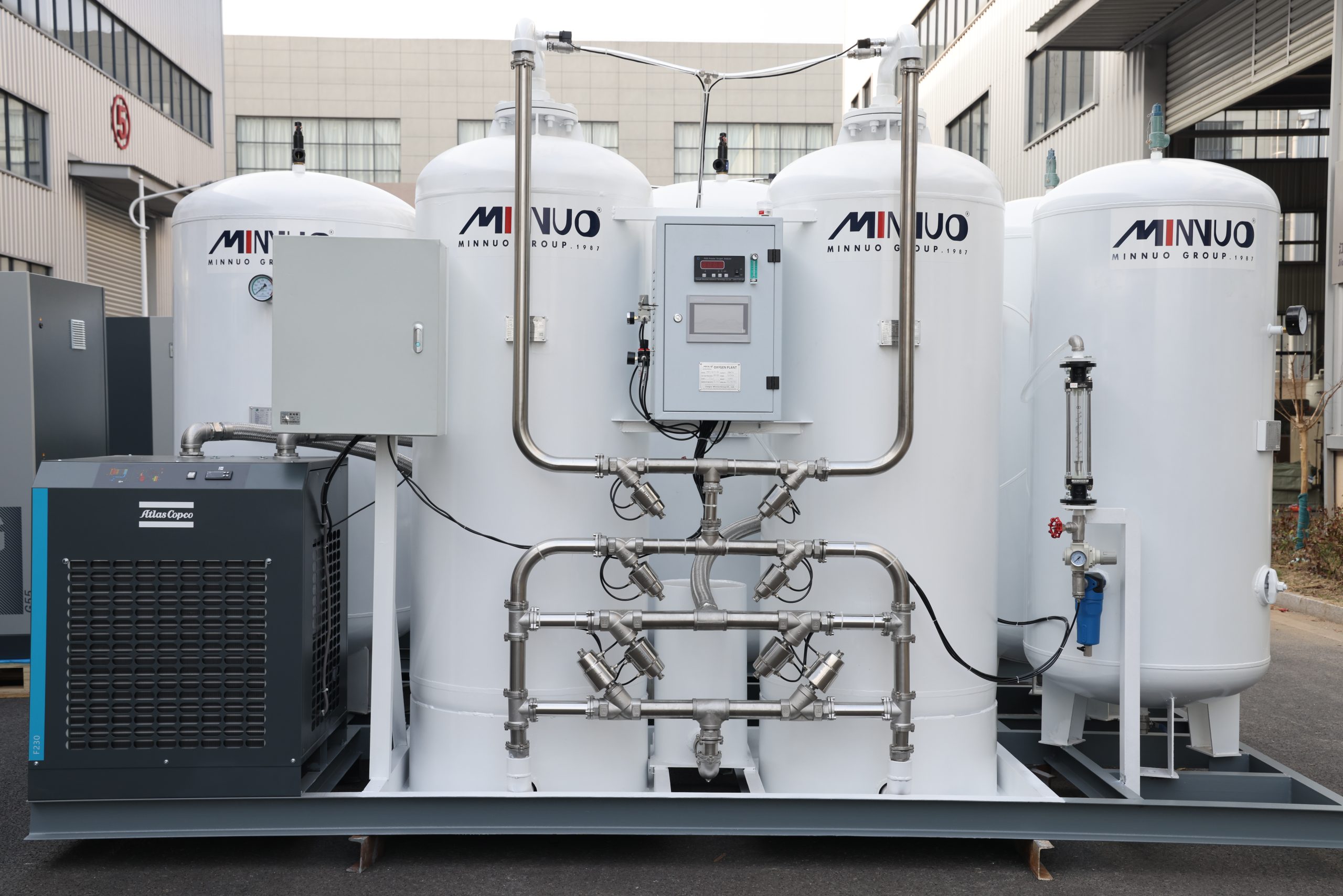

 sales2:+86 17506119168
sales2:+86 17506119168